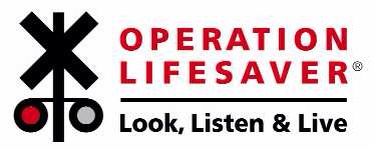Operation Lifesaver urges professional photographers to stay safe, stay away from train tracks
RALEIGH, NC, April 16, 2013 – As warmer weather arrives, Operation Lifesaver (www.oli.org), the rail safety education nonprofit organization, is urging professional photographers to refrain from taking photos of high school seniors, wedding parties, and other subjects on train tracks or trestles.
In North Carolina last year, 28 people were injured or killed while trespassing on railroad property, according to preliminary Federal Railroad Administration statistics; the state ranks eighth in the nation in the number of pedestrian-train trespass fatalities.
“We know that photographers seek creative portrait settings; however, using train tracks as a backdrop for photos is not only dangerous, it is illegal trespassing,” said Vivian Speight-Bridges, North Carolina Operation Lifesaver state coordinator. “This spring, as part of our mission to reduce deaths and injuries around trains, we are asking professional and amateur photographers to set the right example by staying away from train tracks.”
A teacher who taught art and photography was struck and killed by a train while taking photos on the tracks late in 2012. In response to tragic and preventable incidents like this, Operation Lifesaver has worked with Professional Photographers of America on rail safety education outreach to the professional photographer community.
“Trackside settings have become popular for senior, wedding, and family portraits. But photographers need to know the laws and the safety ramifications of staging a photo shoot near train tracks,” said David Trust, chief executive officer of Professional Photographers of America (PPA). “PPA applauds Operation Lifesaver programs that educate photographers about the danger to themselves and their clients of working near tracks.”
Operation Lifesaver has six “must-know” tips for professional photographers considering a photo shoot near the tracks:
1. Trains can’t stop quickly to avoid people or vehicles on the tracks.
2. An optical illusion makes it hard to determine a train's distance from you – and its speed.
3. The average train overhangs the track by at least three feet.
4. Railroad tracks, trestles, yards and rights-of-way are private property.
5. No tracks should be assumed to be abandoned or inactive.
6. People in your community mimic your behavior.
About Operation Lifesaver
Operation Lifesaver's mission is to end collisions, deaths and injuries at highway-rail grade crossings and along railroad rights of way. A national network of trained volunteers provides free presentations on rail safety. For more information or to request a free safety presentation, visitwww.ncol.org or www.oli.org ; follow OLI on Facebook, Twitter and Pinterest.
#operationlifesaver #imaginginsider
